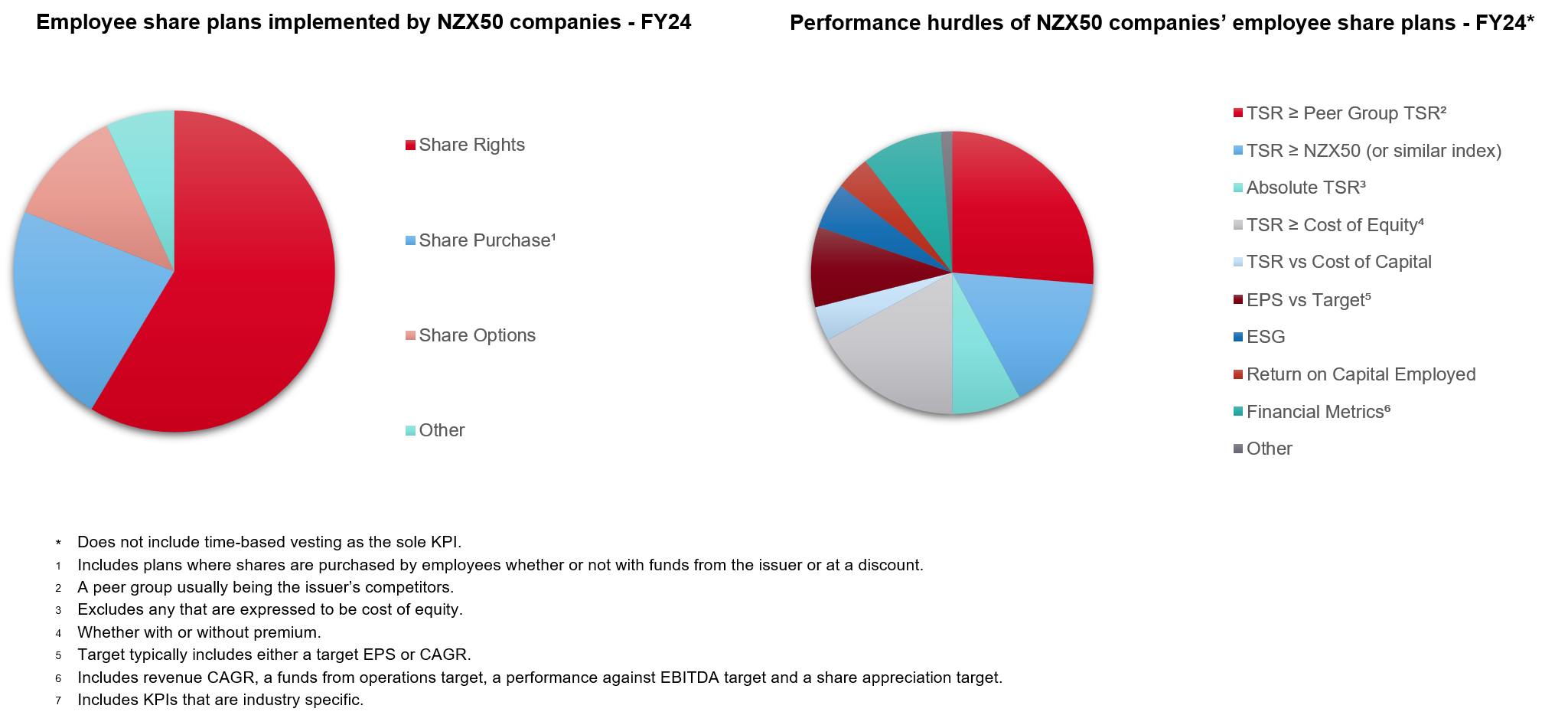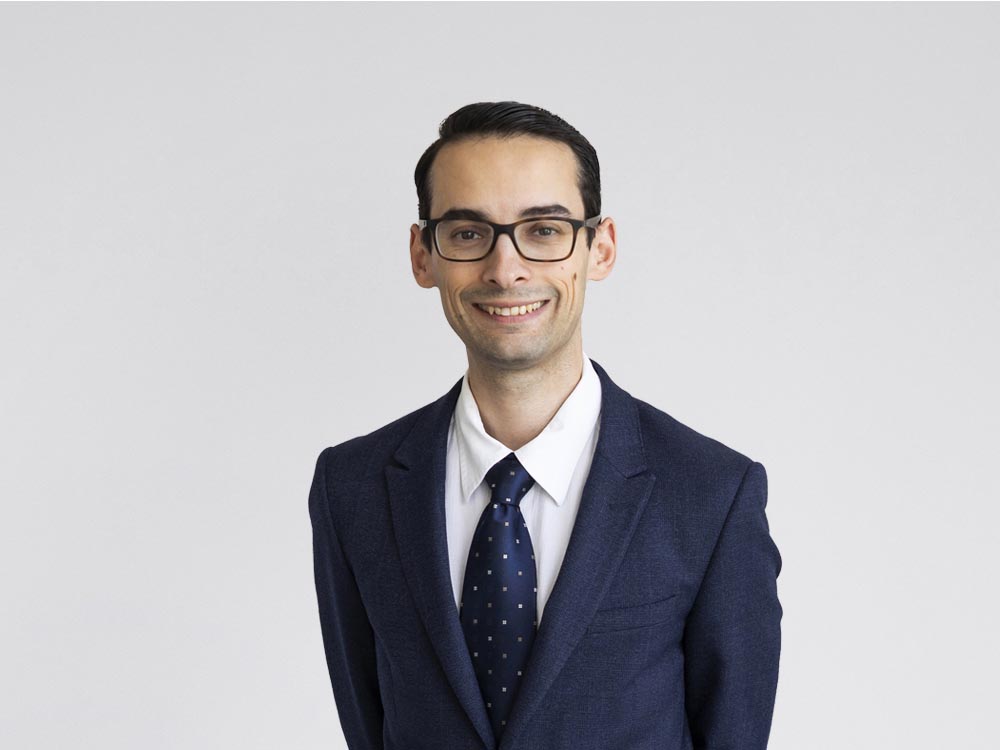Themes from the last year
2024 was a year defined by political uncertainty and a challenging international economic climate. While business and consumer confidence improved in some areas, and upward pressure on salary inflation reduced somewhat, the migration of Kiwis overseas continued.
Against this backdrop, businesses are still actively implementing employee share plans with a view to incentivising and retaining the people key to the success of their business. Retention in particular is a focus for employers given current migration statistics.
This year, looking at long term incentives (LTI), we saw that their face values (the value of LTI available to employees, expressed as a percentage of their fixed salary) varied more than last year, with more extreme outliers. This would indicate that businesses are responding to the challenging economic environment over the past few years in different ways, with some putting more focus on variable remuneration than others.
We are continuing to see environmental, social and governance (ESG) goals factoring into vesting conditions for LTI and short term incentive (STI) awards, whereas previously the conditions were largely financial. This development likely reflects the formalisation of ESG targets in light of mandatory climate reporting, which requires disclosure of management remuneration linked to climate-related risks and opportunities. However, with a changing political environment, this trend, may decline.
In this round up, we set out the key trends in relation to employee share plans based on information provided by NZX50 companies as well as our experience working with private companies.
Market trends
We set out below the predominant types of share plans adopted by NZX50 companies as well as the performance hurdles applying to performance awards under those plans.

Common employee share plans
As we saw last year among NZX50 companies, performance share rights plans, where an employee has a right to acquire a share in the future for no cost, are the most common LTI plan for senior staff, with share purchase plans most common for general staff participation. Share purchase plans normally include plans to acquire shares with financial assistance (e.g., interest-free loans) or at a discount, which can be structured as tax-exempt plans. From our experience working with large private companies, phantom share schemes and share purchase plans are implemented more frequently with an equity pool tending to be 5-10% of share capital.
Measuring employee performance
A challenge for any company implementing an employee share plan is determining the right performance hurdle(s) which appropriately incentivise employees. With LTI plans, the focus is ultimately to drive shareholder value in the longer term, with metrics reflecting that goal. But, in doing so, there is a natural tension between incentivising and rewarding results, while accounting for market trends affecting the company (whether for better or worse).
To account for this, most NZX50 companies adopt dual performance hurdles (less often we see one or three hurdles), one of which is absolute (i.e., looking at company performance) and one of which is relative (i.e., looking at performance against other companies). In this way, employees are incentivised to not just drive results, but results exceeding those of rivals, which also means that market trends alone are less likely to result in full vesting.
Almost three-quarters of the performance hurdles include total shareholder returns (TSR). Unlike in prior years, pairings of relative and absolute performance hurdles showed more variety. This also reflects the greater diversity of performance hurdles in our table above.
Weighting of awards is normally 50:50 between the two hurdles, so that full vesting of an award only occurs if the company beats internal targets and competitors/the market. This also reflects a general move away from having two relative performances hurdles such as TSR vs Peer Group TSR and TSR vs NZX50 or a single relative hurdle, so that staff can have more confidence around vesting. Nonetheless, LTIs do not tend to have pure time-based vesting (except for share purchase plans that are available to wider staff outside of the senior management team).
As we noted last year, ESG hurdles continue to be adopted by some of the NZX50 companies. These include assessing the company’s progress on renewable energy (in the case of an energy company), sustainability or diversity targets. We are also seeing a steady increase in ESG goals being used in STI hurdles. We expect that this increased environmental reporting will continue as mandatory climate reporting beds in, and companies seek to formalise the same. In this respect, climate statements require disclosures on:
-
how the entity’s governance body sets, monitors progress against, and oversees achievement of metrics and targets for managing climate-related risks and opportunities, including whether and if so how, related performance metrics are incorporated into remuneration policies; and
-
metrics for management remuneration linked to climate-related risks and opportunities, expressed as a percentage, weighting, description or amount of overall management remuneration.
Other features of employee share plans

Promoting employee participation and engagement
A recent report by Deloitte analysed multiple financial metrics (such as TSR, EBITDA and EPS) across the S&P 500 companies, comparing those with employee share plans against those without. This report shows how S&P 500 companies with employee share scheme plans have outperformed the market over a decade, demonstrating the long-term potential advantages of these schemes. Deloitte also reviewed four employer recognition award lists from 2023 and found that these companies tend to receive more "best places to work" awards. While, of course, not the sole contributing factor to these successes, there is something to be said for financial stakes in company growth enhancing employee performance and satisfaction.
However, their success hinges on effective communication and employee understanding. Many companies allocate significant resources to issuing shares to staff, yet fail to adequately explain the scheme's value and keep it front of mind. In this case companies miss the benefits that are intended from share ownership such as a more loyal and motivated team.
When effectively communicated, the benefits of employee share schemes significantly outweigh the administrative costs and operational burdens, the latter of these becoming more manageable as technology improves.
To maximise participation and engagement, companies should:
-
regularly and clearly articulate the benefits of share schemes to employees;
-
use technology to make participation easy and rewarding. Platforms like Sharesies Business give employees a simple, engaging way to connect with their share scheme – right alongside their other investments – helping them see the value of ownership every time they check in; and
-
regularly gather feedback to refine the experience.
Tax issues for employee share plans
The tax rules for employee share schemes in New Zealand are intended to tax benefits received under these schemes similarly to cash remuneration. Benefits from employee share schemes are generally considered employment income and are generally taxed when the shares are acquired by the employee on the same terms as other shareholders. Employers are intended to have a corresponding tax deduction equal to the taxable income of the employee (even where the shares are not issued in the employing entity).
In establishing and operating a scheme, employers need to consider:
-
the timing of the income and tax deduction – this will depend on the specific features of the employee share plan implemented, which must be carefully considered to ensure no unexpected outcomes arise (including to ensure a tax deduction is permitted);
-
how the benefit will be valued – we have seen numerous examples of benefits being valued inconsistently with published guidance;
-
who will account for the tax – the default position is for employees to account for the tax, which often creates headaches at the time the benefits are derived (e.g., relating to unfunded tax liabilities and unexpected provisional tax obligations). Employers can instead elect to account for tax on the benefit, but often this is not desirable from an employer’s perspective (particularly for cash strapped start-ups); and
-
on the other hand, whether they are required to account for PAYE (and any other amounts) on the benefit (e.g., where an award is cash-settled).
Recently the Government has made two key concessionary changes to the employee share scheme rules which are designed to increase the attractiveness of employee share schemes (by reducing compliance costs). Namely:
-
from 1 April 2025 the threshold for tax free benefits provided under exempt employee share schemes was increased from $2,000 to $3,000; and
-
a tax bill introduced on 26 August 2025 proposes a deferral regime for the taxation of employee share scheme income for employees of unlisted companies in certain situations (and corresponding deferral of deduction for employers).
This article was co-authored by Nick Stewart, a Solicitor in our Corporate and Commercial team.








